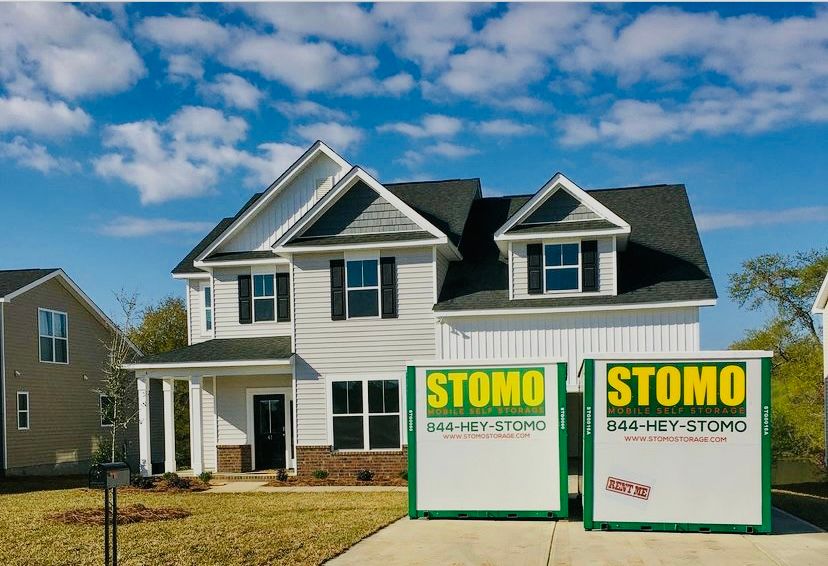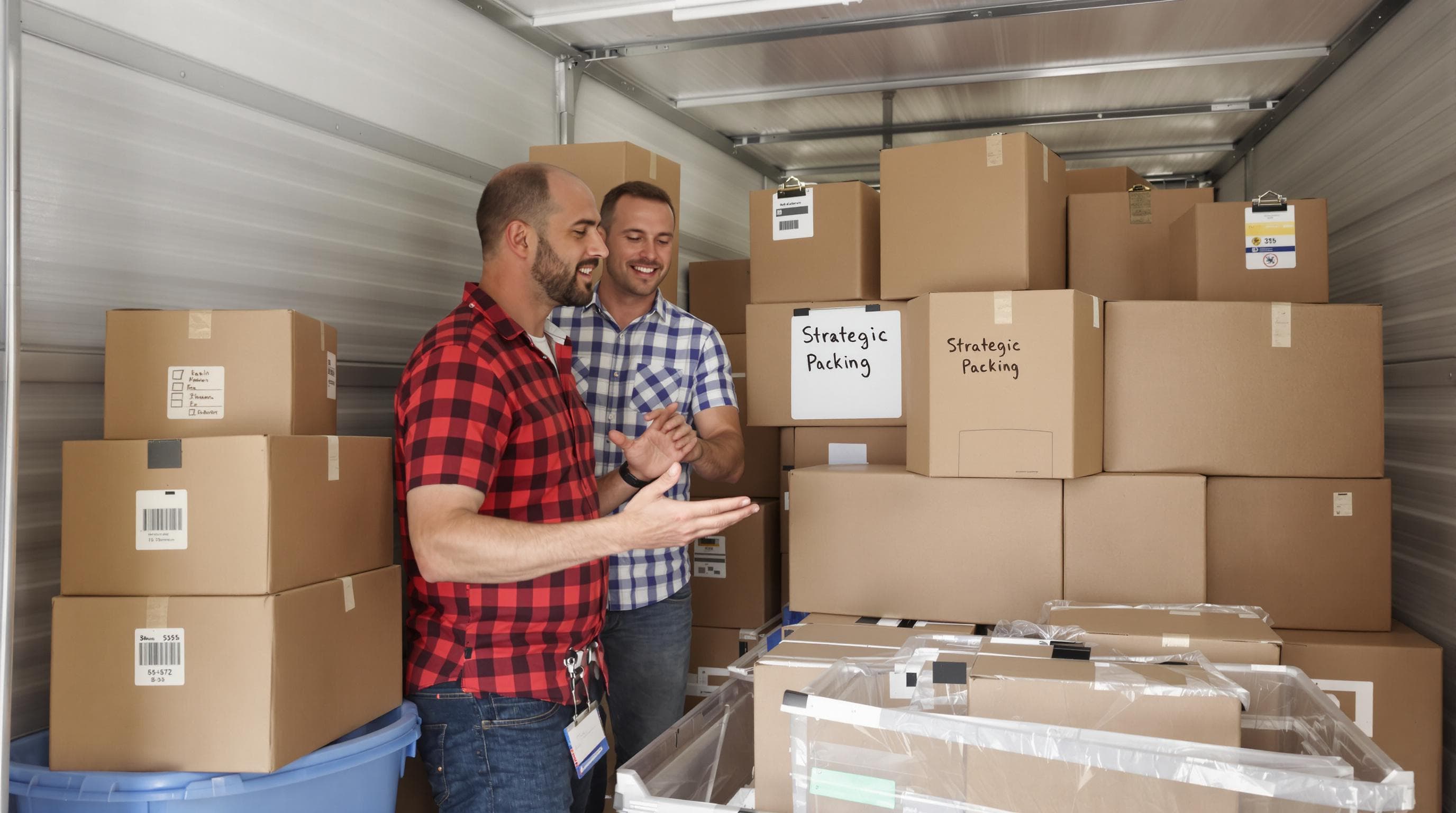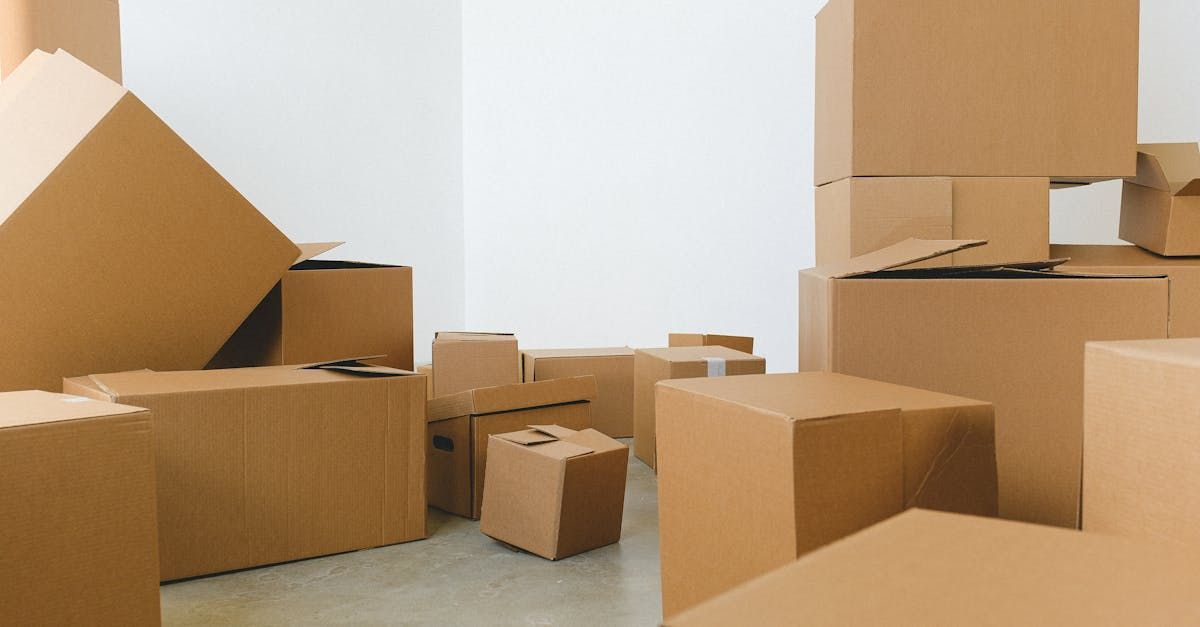
Picking the right storage unit can feel like a guessing game, with so many sizes and options out there. Here is something that might surprise you: a 8×8 unit can fit the contents of an entire walk-in closet, while a 8×20 space can hold everything from a three-bedroom house. Most people think they need the biggest unit available, but in reality, choosing the proper fit could save you hundreds of dollars and make access a whole lot easier.
Table of Contents
Quick Summary
| Takeaway | Explanation |
| Choose the Right Size | Understand your specific storage needs and choose a unit that fits your belongings, ranging from 8’x8’ for minimal storage to 8’x20’ for larger needs like entire home contents. |
| Plan for Accessibility | Leave a pathway in your unit to easily access items, aiming for 1-2 feet of walking space to avoid unnecessary hassle when retrieving belongings. |
| Strategic Packing Techniques | Use uniform-sized boxes for better stacking and consider disassembling larger items to maximize available space in your storage unit. |
| Consider Specialized Needs | For items requiring specific conditions, like electronics or sensitive documents, opt for climate-controlled units to prevent damage from humidity or temperature changes. |
| Create an Inventory System | Label all boxes clearly and maintain a detailed inventory list to save time and reduce frustration when searching for specific items in your storage unit. |
Understanding Storage Unit Sizes Explained
Choosing the right storage unit size is more than just picking a random space. It’s about understanding your specific storage needs and finding a solution that protects your belongings while maximizing value. Whether you’re a homeowner during renovation, a college student between moves, or a small business managing inventory, selecting the appropriate storage unit size can save you time, money, and unnecessary stress.
Decoding Storage Unit Dimensions
Storage units come in a variety of standard sizes, each designed to accommodate different storage requirements. Our packing guide can help you understand how to maximize your space effectively. Generally, unit sizes range from compact 8’x8’ spaces to expansive 8’x20’ units, providing flexible options for every need.
Typical storage unit dimensions break down into several key categories:
-
8’x8’ Unit: Equivalent to a small walk-in closet, ideal for storing boxes, seasonal decorations, or a few pieces of small furniture. Perfect for college students or those with minimal storage needs.
-
8’x12’ Unit: Approximately half the size of a standard garage, this unit can typically hold the contents of a one-bedroom apartment. It’s suitable for storing furniture, appliances, and multiple boxes.
-
8’x20’ Unit: Comparable to a one-car garage, this size accommodates the furnishings of a three-bedroom house, including large appliances and multiple rooms of furniture.
Here’s a table summarizing the typical storage unit sizes mentioned and what they can hold. This will help you quickly compare different options for your needs.
| Unit Size | Equivalent Space | Typical Use Cases |
| 8×8’ | Small walk-in closet | Boxes, small furniture, seasonal items, college students |
| 8’x12’ | Half of a standard garage | 1-bedroom apartment contents, furniture, appliances |
| 8’x16’ | One-car garage | 3-bedroom house contents, large furniture, appliances |
| 8’x20’ | Extra large unit | Multiple rooms, inventory, large or specialty items |
Determining Your Precise Storage Needs
Selecting the right storage unit requires careful consideration of several factors. Consider the volume and type of items you need to store. A motorcycle or boat will require significantly different space compared to office files or household goods. Take inventory of your belongings and measure larger items to ensure they’ll fit comfortably.
For those undergoing home renovations or dealing with storm recovery, consider not just current storage needs but potential future requirements. Flexibility is key. Some people find they need a slightly larger unit to accommodate unexpected items or provide working space within the storage area.
Local storage experts recommend leaving a small pathway in your unit for accessibility. This means not filling the space from floor to ceiling but creating a walkable area to reach items stored in the back. A good rule of thumb is to leave about 1-2 feet of walking space in your chosen unit.
Budget also plays a crucial role in storage unit selection. Larger units cost more, so it’s essential to balance your space requirements with financial constraints. Many storage facilities offer virtual tours or size guides to help you visualize the space before committing.
For South Carolina residents facing unique storage challenges like hurricane preparedness or seasonal home transitions, understanding unit sizes becomes even more critical. Your storage solution should adapt to your specific local needs, providing protection and accessibility for your valuable belongings.
Choosing the Right Unit for Your Situation
Selecting the perfect storage unit is not a one-size-fits-all solution. Your specific circumstances, from personal lifestyle to professional needs, play a crucial role in determining the ideal storage space. Understanding the nuanced requirements of different storage scenarios helps you make an informed decision that protects your belongings and provides maximum convenience.
Lifestyle and Personal Storage Needs
Personal storage needs vary dramatically across different life stages and situations. College students might require compact units for seasonal belongings, while families undergoing home renovations need spacious solutions to temporarily house furniture and household items. According to Forbes research, a 8’ x 8’ unit works perfectly for small personal collections, while a 8’ x 12 unit accommodates an entire one-bedroom apartment’s contents.
Military families facing frequent relocations often seek flexible storage options that can adapt to their unique transition periods. Small business owners might need climate-controlled units to protect sensitive inventory, while contractors require robust spaces for equipment and materials. Read our expert packing guide for strategic storage solutions tailored to your specific needs.
Professional and Specialized Storage Requirements
Business storage demands differ significantly from personal storage. A local retail shop might need a 8’ x 16’ unit to store seasonal inventory, while a construction company could require a 8’ x 20’ space for heavy machinery and tools. Specialized storage considerations include:
-
Temperature Sensitivity: Businesses with electronic equipment or archival documents need climate-controlled units.
-
Security Needs: High-value inventory requires units with advanced security features.
-
Accessibility: Frequent access means choosing a unit with convenient loading zones.
Insurance adjusters and restoration professionals often need flexible storage solutions during storm recovery or home damage scenarios. The ability to quickly store and access items becomes paramount in these time-sensitive situations.
Strategic Storage Selection Factors
Beyond size, several strategic factors influence storage unit selection. Location proximity, accessibility, security features, and pricing all play critical roles. For South Carolina residents dealing with hurricane preparedness or seasonal transitions, storage becomes more than just space management it’s about protecting valuable assets.
Consider potential future needs when selecting a unit. A slightly larger space might provide unexpected flexibility, allowing room for additional items or creating a small workspace within the unit. Budget constraints are important, but investing in the right size and type of storage can save significant money and stress in the long run.
Local storage experts recommend conducting a thorough inventory before selecting a unit. Measure large items, stack boxes efficiently, and plan for a small walkway to ensure accessibility. Remember that proper organization maximizes your storage unit’s potential, transforming it from a simple space to a strategic solution for your personal or professional storage challenges.
Common Storage Needs by User Type
Storage solutions are not universal. Different life stages, professions, and circumstances demand unique storage approaches. Understanding these specialized needs helps individuals and businesses select the most appropriate storage strategy for their specific situation.
Residential Storage Scenarios
Homeowners and residents face diverse storage challenges that evolve with life transitions. According to Public Storage research, a 8’x8’ unit works perfectly for studio apartment residents, providing space for essential furniture and personal belongings. Families undergoing home renovations often require larger 8’x20’ units to temporarily store household items during construction or remodeling.
College students represent a unique storage demographic. They typically need compact, flexible solutions for seasonal items, textbooks, and dorm room furnishings. Learn more about mobile storage options that can simplify moving and storage for students transitioning between academic years or relocating for internships.
Luxury second-home owners in South Carolina require specialized storage strategies. Climate-controlled units protect valuable furniture, artwork, and seasonal decorations from humidity and temperature fluctuations. These residents often need units that offer enhanced security and easy accessibility during periodic visits.
Here’s a table highlighting different user types and their typical storage unit requirements, summarizing the scenarios described in this section.
| User Type | Typical Unit Size | Common Items Stored | Special Considerations |
| College Student | 8×8’ | Boxes, dorm furniture, seasonal items | Mobility, short-term flexibility |
| Studio Apartment Renter | 8’x10’ | Essential furniture, personal belongings | Compact, cost effective |
| Family (Renovation) | 8’x20’ | Household items, multiple rooms furniture | Temporary, easy access |
| Luxury Home Owner | 8’x20’+, Climate | Artwork, valuable furniture, decorations | Climate-control, security |
| Retail Business | 8’x16’, 8’x20’ | Inventory, seasonal stock | Accessibility, security |
| Contractor/Construction | 8’x20’ | Equipment, tools, building materials | Accessibility, security |
| Military Family | Varies/Portable | Household items, furniture | Flexible, portable units |
Professional and Business Storage Requirements
Business storage needs vary dramatically across industries. Small retail businesses might require 8’x16’ units for seasonal inventory, while construction companies need spacious 8’x20’ spaces to store heavy equipment and materials. Key considerations include:
-
Temperature Control: Critical for businesses storing electronics, sensitive documents, or pharmaceutical samples.
-
Security Features: Essential for protecting high-value inventory and confidential materials.
-
Accessibility: Frequent access requirements demand strategically located storage solutions.
Contractors and insurance adjusters frequently need flexible storage during storm recovery or emergency restoration projects. Quick, reliable storage becomes crucial in time-sensitive scenarios, especially in regions prone to natural disasters.
Specialized Storage for Unique Situations
Military families represent another group with distinctive storage needs. Frequent relocations and deployment schedules require adaptable, secure storage solutions that can accommodate household items during transitions. Portable storage units offer exceptional flexibility for these families, allowing seamless moves across different locations.
Small business owners and entrepreneurs often use storage units as extensions of their workspace. A well-organized unit can serve multiple purposes: inventory management, document archiving, and equipment storage. The key is selecting a unit that balances accessibility, security, and cost-effectiveness.
For South Carolina residents facing unique regional challenges like hurricane preparedness, storage is more than convenience it’s a critical component of property protection. Choosing the right storage solution means considering factors like flood resistance, security, and quick accessibility during emergency situations.
Ultimately, effective storage is about understanding your specific needs and finding a solution that provides peace of mind. Whether you’re a college student, homeowner, business professional, or someone in between, the right storage unit can transform how you manage your belongings and protect your investments.
Tips for Maximizing Your Storage Space
Effective storage is an art form that goes beyond simply renting a unit. It requires strategic planning, smart organization, and a thoughtful approach to maximizing every square inch of available space. Whether you’re a homeowner, student, or business professional, understanding how to optimize your storage can save you money, reduce stress, and protect your valuable belongings.
Strategic Packing and Organization Techniques
Packing a storage unit is more than throwing boxes into a space. According to Lakeside Storage experts, disassembling large furniture pieces can dramatically increase available space. Break down bed frames, tables, and other bulky items to create a more compact storage configuration. Our comprehensive packing guide offers detailed strategies for efficient space utilization.
Uniform-sized boxes are a game-changer in storage organization. As recommended by All Aboard Storage, using boxes of consistent dimensions allows for more stable and efficient stacking. This approach not only maximizes vertical space but also creates a more organized and accessible storage environment.
Pro tip for South Carolina residents: When storing items in areas prone to humidity and temperature fluctuations, consider using plastic containers with tight-sealing lids. These provide better protection against moisture and potential pest intrusion compared to cardboard boxes.

Vertical Space and Strategic Placement
Utilizing vertical space is crucial in storage unit optimization. Think of your unit as a three-dimensional puzzle where every inch counts. Start by placing heaviest and largest items at the bottom, creating a stable base. Use sturdy shelving units or pallets to lift boxes off the ground, protecting them from potential moisture and creating additional storage layers.
Create a strategic pathway within your storage unit. Leave a narrow walkway that allows you to access items at the back without having to remove everything in front. This might mean sacrificing a small amount of storage space, but the accessibility gained is invaluable. For those managing storage during home renovations, our temporary storage solutions guide provides additional insights into efficient space management.
Advanced Storage Optimization Strategies
Think beyond traditional storage methods. Vacuum-sealed bags can compress clothing, bedding, and soft items, reducing their volume significantly. Use the internal spaces of furniture pieces storage drawers, for instance to store smaller items like documents, linens, or seasonal accessories.
Label everything meticulously. Create a detailed inventory list and mark boxes clearly with contents and the room they belong to. This might seem time-consuming, but it saves hours of frustration when you need to locate a specific item. Consider creating a simple map or diagram of your storage unit layout to make retrieval even easier.
For valuable or sensitive items, invest in climate-controlled units. While they might cost slightly more, they provide protection against humidity, temperature extremes, and potential damage. This is especially critical for electronics, artwork, important documents, and furniture made from wood or leather.
Remember, maximizing storage space is about working smarter, not harder. Take time to plan your storage strategy, invest in quality packing materials, and approach your storage unit as a carefully organized extension of your living or working space. With the right techniques, you can transform a simple storage unit into an efficient, accessible, and protective solution for your belongings.
Frequently Asked Questions
What size storage unit do I need for a one-bedroom apartment?
A 8’x10’ storage unit is typically recommended for the contents of a one-bedroom apartment, accommodating furniture, appliances, and boxes.
How can I maximize the space in my storage unit?
To maximize your storage unit space, use uniform-sized boxes for better stacking, disassemble larger furniture, and utilize vertical space by adding shelves or pallets.
What items require a climate-controlled storage unit?
Items such as electronics, sensitive documents, artwork, and valuable furniture benefit from climate-controlled units to protect them from humidity and temperature fluctuations.
Is it better to choose a larger storage unit than I need?
While it might be tempting to choose a larger storage unit for flexibility, selecting the appropriately sized unit can save you money and make access easier. Ensure you assess your actual storage needs carefully.
Still Unsure Which Storage Unit Size Will Work Best? Let Stomo Help You Get It Right
It is stressful trying to choose the perfect storage unit size. This guide just showed how a unit too big can waste money, and one too small can limit your accessibility. Space, security, and a stress-free experience matter especially when renovation, moving, or emergencies force you to make quick decisions. Stomo understands the pressure and confusion that comes with storage. We provide weather-resistant mobile storage containers, delivered to your location anywhere in South Carolina, so you get the flexibility to pack and access your items on your own schedule. Our family-owned service means no hidden fees and a personalized touch that national chains simply cannot match. Read more about our solutions on the STOMO Mobile Storage and MOVEMO Moving Service page.

Stop worrying about picking the wrong sized unit or dealing with hard-to-reach storage locations. Visit Stomo today to see why families, business owners, and college students across Charleston, Myrtle Beach, and Columbia trust us to keep their belongings safe and accessible. Reserve your portable storage unit or book your move now and discover award-winning local care for every storage challenge.

